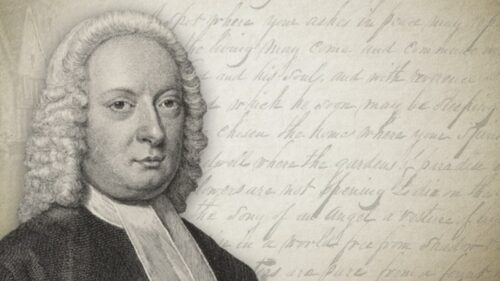-
A Defense Of Hyper-Calvinism
It may be asked, what can have provoked the spirit of Mr. Aikman to level his shafts of vituperative slander against such servants of God as the late Mr. Philpot, Dr. Hawker, and not less against the late Messrs. Huntington, Gadsby, Vinall, and Warburton, though these last three, merely to suit his own purpose, are not mentioned by name in his book? The storm which Mr. Aikman says he has by his own vigorous hand raised in the Strict Baptist churches is not, and cannot be in strict justice because any of the good men who are now silent in their graves were in their life opposed to an indiscriminate preaching of the Gospel to sinners, or to all classes of hearers of the word;…
-
A Meaningful Discussion Between Moderate And Hyper Calvinists
Many followers of Andrew Fuller believe the fundamental error of Hyper Calvinism revolves around an imbalance between divine sovereignty and human responsibility. Many followers of John Gill believe the fundamental error of Moderate Calvinism (Fullerism) revolves around their distinction between the covenant of redemption and the covenant of grace. The Moderate Calvinist believes unregenerate sinners are responsible to savingly believe on Christ under a conditional covenant of grace, and that regenerate sinners are responsible to obey the heart law once they have been born again. The Hyper Calvinist believes unregenerate sinners are responsible to obey the heart law under the authority of the covenant of works, and that regenerate sinners are responsible (privileged) to savingly believe on Christ under the authority of the unconditional covenant…
-
1 Hyper Calvinist Quotes
Mark you; many of our fine so-called ministers talk about offering salvation: and men refusing: they might as well go to the farthest and of the coal pit, and command the coal to rise up, and walk out of itself. God says, “I will bring them;” and that not part of the way merely; no: but through the fire, and try them; purify them: put a living, crying soul into them: and answer them in the joy of their hearts: so that they shall say, “the Lord is my God; and I will say they are my people.” W. Skelton: “Such are the notions [misinterpreting the scriptures] of Wesleyans, Fullerites, Mongrel Calvinists, and Modem Baptists.” W. Tant: “All the efforts of man—all the strategems of…
-
Divine Sovereignty And Human Responsibility?
Hyper-Calvinists are often accused of minimizing the responsibility of man by magnifying the sovereignty of God. This is a false charge and an erroneous dichotomy. Rather than minimizing the responsibility of man, Hyper-Calvinists rightly identify it. They believe unregenerate sinners are responsible to God according to the terms and promises of the covenant of works, for it is under the authority of that covenant they are in relationship to God. On the other hand, regenerate sinners are responsible to God according to the terms and promises of the covenant of grace, for it is under the authority of that covenant they are in relationship with God. Experientially speaking, the turning point for a sinner between the two covenants is regeneration, which is not conditioned (spiritually…
-
A Complete And Certain Salvation
“The Lord God will help Me, therefore shall I not be confounded; therefore have I set My face like a flint, and I know that I shall not be ashamed.”—Isaiah 50:7 These surely, brethren, are not the words of the prophet Isaiah concerning himself; for, if we look at the context, we find the work of the Lord Jesus set before us in such words as these: “The Lord God hath opened mine ear, and I was not rebellious, neither turned away back. I gave my back to the smiters, and my cheeks to them that plucked off the hair: I hid not my face from shame and spitting.” I need scarcely tell you of whom the prophet spake in these words. We have in…
-
The Free Offer Of The Gospel
The free offer of the gospel is not only a presumptuous act on the part of the preacher, it also contradicts the nature of the gospel, setting forth a false message to unregenerate sinners. While it is a good tool for proselyting, it is a disgraceful tactic for evangelism. There is a vast difference between preaching and offering. The scriptures make clear the gospel is to be freely preached, but there is not a single reference it is to be offered. Hyper Calvinists are often accused of preaching the gospel only to the elect. This is not true. Hyper Calvinists preach a full and free gospel to everyone. They do not, however, presumptuously offer the gospel to anyone. The gospel is God's to give (through…










